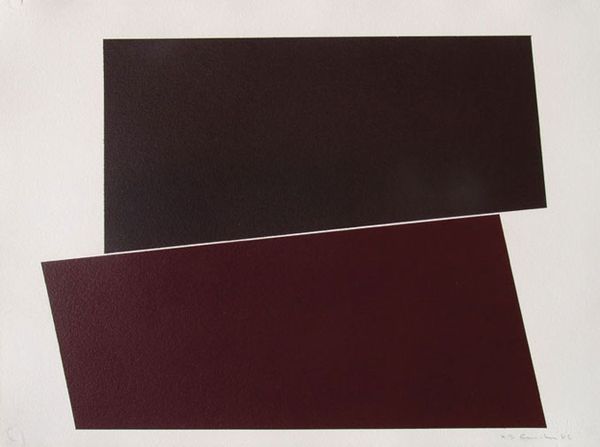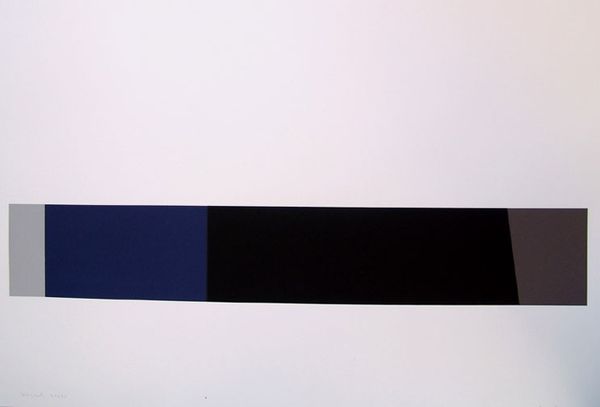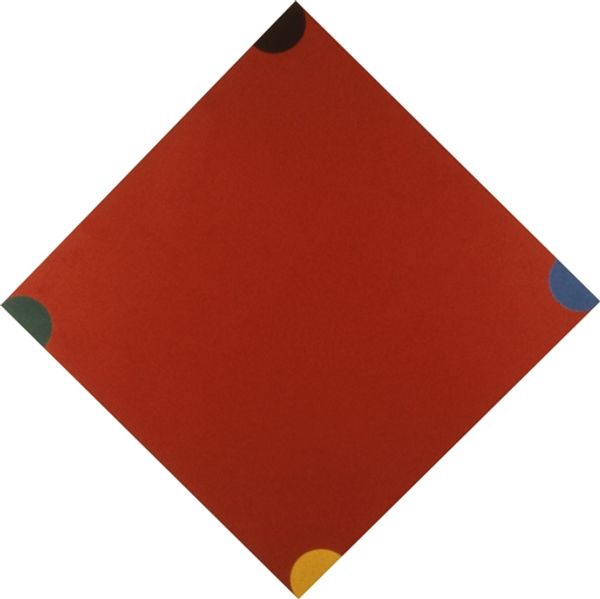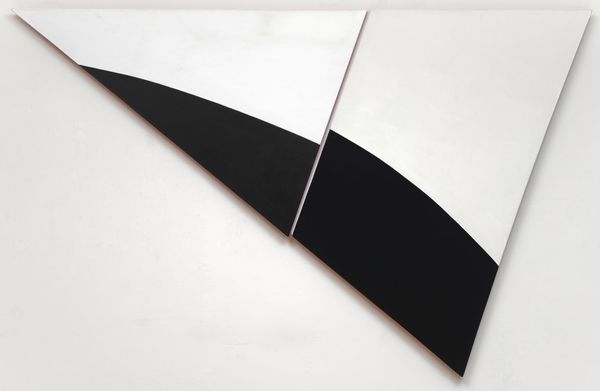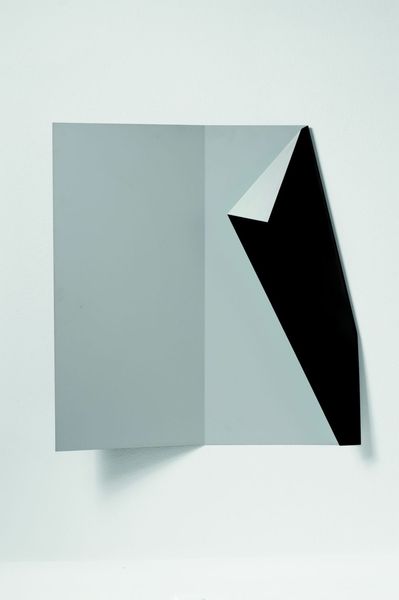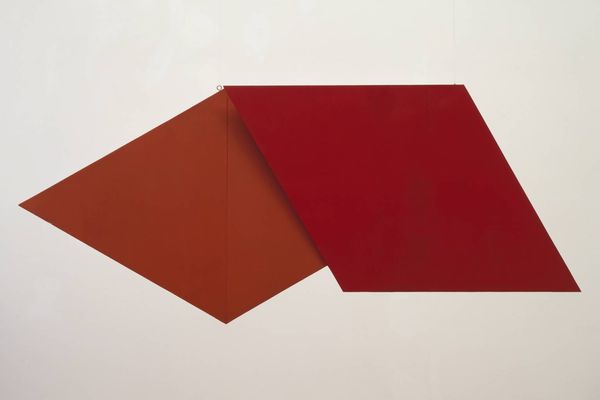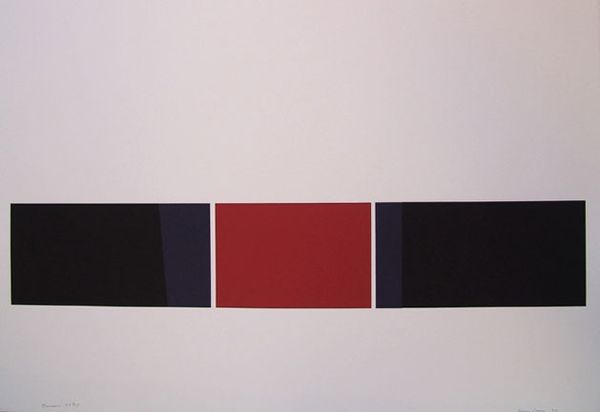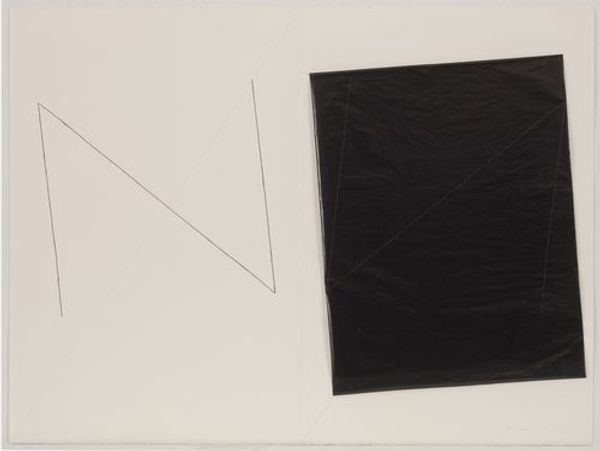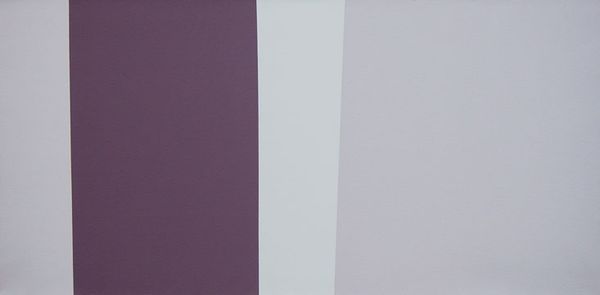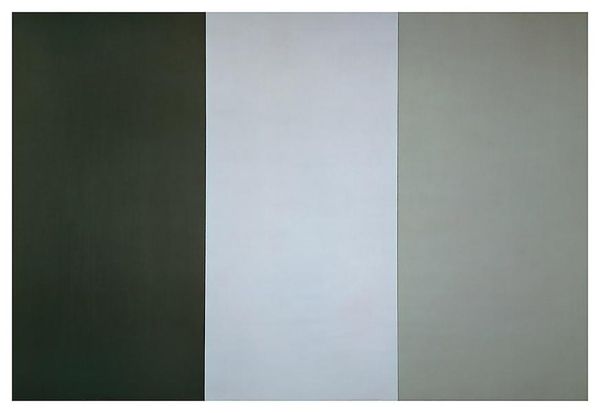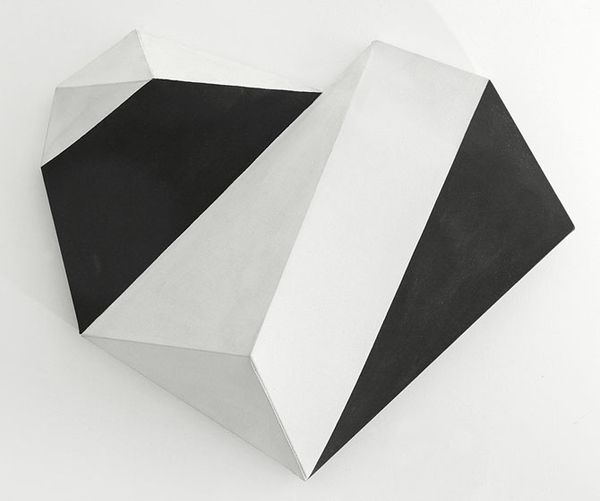
#
monochromatic
#
minimalism
# print
#
form
#
geometric-abstraction
#
abstraction
#
line
#
monochrome
Copyright: Yves Gaucher,Fair Use
Curator: This print, titled "Fente," was created by Yves Gaucher in 1986. Immediately striking are its bold geometric forms and stark monochromatic palette. Editor: Yes, it’s immediately austere, almost confrontational. The shapes push against each other, creating a palpable tension on the surface. What else can you tell me about it? Curator: Gaucher was deeply interested in the physical act of printmaking. He was always concerned with how materials, like inks and paper, could be used to communicate certain spatial and structural relationships, and particularly to activate a viewer’s awareness of these materials in the making process. "Fente," in particular, represents his movement towards simpler forms after the colorful gestural abstraction which characterized much of his prior work. It feels connected, conceptually, to the hard-edge painting happening in Canada at the time, specifically the work and influence of Guido Molinari. Editor: I see that. Thinking in terms of semiotics, one can’t help but observe that the monochrome palette here—nearly complete reduction of color—serves to amplify the significance of the shapes themselves. Each form establishes its dominance, defining itself against the neutral background, asserting almost brutal independence. This resonates deeply with postwar artistic anxieties concerning form, reduction, and truth to materials. Curator: Certainly. It is not merely about shapes, but about how they are deployed, composed and situated to signify materiality. He was constantly pushing at the boundaries between the perceived and the real. One might see the piece and disregard the physical act that resulted in what’s visually offered; Gaucher hoped to make one cognizant of its production by visually foregrounding such forms. Editor: And that intersection of forms creates negative space; this contrast further energizes the composition and directs the viewer’s attention to its essential, constructed nature. Do you find Gaucher succeeded? Does “Fente” expose its own constructedness? Curator: I’d argue he succeeded in creating a new visual language of industrial forms and their impact, which in turn makes the process apparent to any contemporary viewer today. It's as if he's saying, "Look, this isn't just a flat plane; it's the product of a real process." Editor: I'm left considering how form and void interact to create a dynamic spatial game here, while you consider production’s visual vestiges. Interesting how his visual choices have left us contemplating entirely different facets of "Fente."
Comments
No comments
Be the first to comment and join the conversation on the ultimate creative platform.
